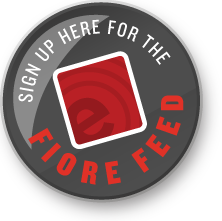Building Your List for Email Marketing
Acquiring and maintaining customers and clients is a priority for any marketing plan. The multiple ways to accomplish acquisition and retention requires decision making on what platforms, channels and resources are used. What works for a real estate brokerage will be different than a service business. However, one platform that benefits every business is building a list of customers and prospects for email marketing.
A 2021 study by Bluecore measured people’s thoughts about email as a personal message from brands. The results showed 74% of Baby Boomers, 72% of Gen X and 64% of Millennials prefer email to receive brand communications. More than half indicated using their smart phones as the primary device used when checking emails.
 Building Your List Online
Building Your List Online
If you already have a strong email marketing program, great! For most businesses there is always room to grow their list. Consider these ideas for growing your email list using your website and social media:
- Have a Call to Action on the home page, above the fold, with a valuable offer in exchange for signing up. Valuable can mean anything from a weekly digital newsletter to a checklist relevant to your audience.
- Include the Call to Action at the end of blogs, on the About page and above the fold on other pages.
- Minimize the number of fields on the opt-in form. First name and email address is optimal. Unless there is a strong argument for more, leave off fields like last name, city or zip code when you first start building the list.
- Once someone signs up, have your system set up to send an immediate “Welcome” email with a previous newsletter or promised checklist.
- Promote your weekly newsletter or checklist on your most engaged social media channel. This is also a great way to test how valuable your existing audience finds the offer.
- Using contests or seasonal campaigns is another way to move your social media audience to your email list.
FIORE COMM TIP: It is great to have fans and followers on social media, but you are limited to only that channel for communications. If something happens with your social media account (suspended, deleted), you want to assure there is still a way to interact with those fans and followers. Asking them to join your email list brings them value and assures you have a way to stay in touch beyond social media.
Building Your List Offline
There are more opportunities than you might think to add prospects and clients to your email marketing list.
- Network and build your list at the same time. Put a QR code on the back of your business card that leads to the Call to Action on your website.
- Incorporate it into the shopping experience. Ask for the information when customers are at the register and include a card with online sign-up information in the bag.
- Bring the fishbowl out, sans fish and coral, for prize winning opportunities. Continue to minimize the information requested to reduce resistance. It is still preferable to get email and first name for prize drawings – just remind the people registering to be on the lookout for announcements.
Going through the basic steps of list building benefits any size company. According to Katrina Kirsch of HubSpot, “mail generates $42 for every $1 spent, which is an astounding 4,200% ROI, making it one of the most effective options available.” Using a provider such as MailChimp, HubSpot or Constant Contact gives you the tools for website opt-in forms and email newsletter templates. The most important thing is to get started and be consistent. Once the basics have become a part of your routine marketing schedule, consider going to the next level.
email generates $42 for every $1 spent,
which is an astounding 4,200% ROI
Expert Level List Building
Personalization, A/B testing, lead magnets and affiliate partnerships are examples of email list building strategies that require a higher degree of expertise. Taking one step at a time to build customization into your email marketing keeps it from being overwhelming and gives you a better sense of what works best with your list.
FIORE COMM TIP: When you are starting out, the free version of email marketing service providers is sufficient. Once you start to implement A/B testing and other expert level strategies, it’s time to sign up for a paid account to gain access to advanced tools. Comparison shop and check out the reviews. To get you started, check out Constant Contact, MailChimp, HubSpot and Adobe’s Active Campaign.
Personalization is possible because you have been gathering the first names of those joining your email marketing list. The next step is to use their name in the subject line or body copy of the email, or both when appropriate. Epsilon research found that 80% of customers are more likely to make a purchase when their experience is personalized. A higher level of personalization is possible with the more information you have about those on your list.
In the following graphic you can see the personalization occurs in the greeting, but not in the subject line. Please note that including the word “Sale” in a subject line is not recommended. Your email provider will have training on best practices, including what words will send your email to the spam folder.

A/B Testing for List Building
Before you start asking for last name, birthday and favorite hobby, the balance between more information and losing potential opt-ins needs assessment. Testing will give you the factual data regarding information versus resistance. It is too easy to fall into the trap of assuming everyone else is like us and make decisions subjectively, when getting the facts through A/B testing is part of a strong marketing plan.
Brands that always include an A/B test in their emails
generate an ROI of 48:1. (Litmus, 2019)
The term A/B Testing, also known as split testing, may sound intimidating if you have never implemented the process. But understanding the concept is key in understanding its importance. Using the opt-in form as an example, half the web traffic to your website is directed to the original form, now called the “control” version. The other half of your web traffic is directed to an exact duplicate, except one element is changed on the B, also known as the variant, opt-in form.
In keeping with our goal to build the best email marketing list possible, the first step would be adding a field on the B version of the opt-in form, asking for more information. If you are a geographically based business, knowing the zip code of your subscribers would be highly relevant. The next step is to wait until there has been enough traffic to reflect a preference of one version of the opt-in form over the other.
Usually within two weeks, the analytics will give a clear indication whether asking for the zip code negatively impacted opt-ins or made little difference. Even if 5% fewer people signed up on form B, you would likely decide knowing the zip codes is worth that temporary loss. “Temporary” because you will have other chances to have them sign up as long as you continue to offer value in exchange for opting in.
If you wanted to also add addresses, then you would consider the opt-in form with the zip code as your new control, dividing the traffic to your website again. This time you would be testing the impact of adding an address field to the B version of the form. If 65% fewer people opted in on the B version, you would likely not make that your new control.
You can see that testing takes time, but it also takes the guess work out of making changes to important parts of your marketing. The concept is used in many areas, including subject lines, lead magnets, images, branding and more.
FIORE COMM TIP: A/B testing can be a powerful tool to get factual data in many areas of your business, not just email marketing. However, be careful to not get bogged down in the details. It is more important to implement than to be perfect.
Analysis paralysis kills momentum
Lead magnet. Valuable offer. Special report. These terms represent how you bring value to your prospects and list. If you are a moving company, a detailed checklist broken down by the timeline leading up to move day is worthy of an opt in. A tree company could offer tips on where to plant certain species of trees and what signs indicate it is time to call an arborist.
You promise value in exchange for opt in. When a person clicks the “sign me up” button, they are trusting that your offer truly is of value to them, and they trust you will not abuse the privilege of having their contact information. If your call to action includes content, you want opt-in art to be attractive and the body copy to be compelling.
If writing and designing are keeping you from building an offer, contact the agency or person that helps you with other marketing needs. If you are marketing your business solo, then prioritize the content over design. It is more important that the information is relevant; looking nice is secondary.
Affiliate partnerships
Affiliate partnerships is the last list-building strategy in this article. There is a plethora of ideas out there on building lists, but be cautious on how much time is spent learning versus implementing. And it’s easy to get overwhelmed. Select one strategy and start.
When brainstorming affiliate marketing ideas, ask yourself who you know that has the same kind of clients but is not a direct competitor. Those are the business owners you want to partner with to grow your list.
A real estate broker and moving company make great partners. If you are the mover, offer the agent’s buyers and sellers your moving checklist via a QR code on the back of your business card. You may be providing the moving guide, but the agent gets the credit from their buyers and sellers for connecting them to something truly useful.
Another example would be a plumbing company with 5,000 subscribers partnering with an electrical contractor they know and trust, offering to highlight the owner in an upcoming newsletter. In exchange, the electrical contractor highlights the plumbing company to their 3,500 subscribers. You each offer a service solution for the homeowners, landlords, HOAs and builders on your respective lists, without having to worry about direct competition.
You now have more ideas on how to enhance your email marketing strategy and grow a list both online and offline. One key strategy we have not covered is segmenting your list. Segmentation is an integral part of increasing the response and retention of subscribers. Look for an upcoming Fiore Communications article exclusively focusing on the how and why of email marketing segmentation.
Marketers who use segmented campaigns note
as much as a 760% increase in revenue. (Campaign Monitor, 2019)




